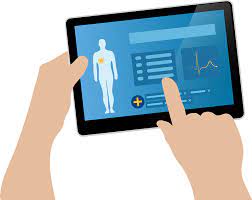Why Electronic Health Records are Good for You
Technology and healthcare are a winning combination for better patient care. Discover how Electronic Health Records can benefit you and make your next doctor’s visit easier!
1. What are electronic health records?
There is no denying that technology has revolutionized the way we live and work. In almost every sector, from retail to banking, technology has made things easier and more efficient. But one area where it is really starting to make a difference is in healthcare. One of the most important developments in recent years has been the rise of electronic health records (EHRs). EHRs are digital versions of the traditional paper medical records that have been used for decades. They provide a more comprehensive and accurate picture of a patient’s health history, and they can be accessed by authorized healthcare providers anywhere in the world. There are many advantages to using EHRs. For patients, they make it easier to get the care they need by providing doctors with a complete picture of their health history. For doctors, they improve efficiency by eliminating the need to track down paper records. And for healthcare systems, they provide a valuable source of data that can be used to improve care and identify trends. The benefits of EHRs are clear. But making the transition from paper to digital can be daunting for some healthcare organizations. There are costs involved in implementing an EHR system, and there is also a learning curve as staff members get used to using new software. However, the long-term benefits of EHRs are worth the investment, and we believe that all healthcare organizations should make the switch as soon as possible.
2. How do electronic health records improve patient care?
Technological advances have made it easier for providers to access patient health information and have resulted in more efficient and effective care. The use of electronic health records (EHRs) has increased dramatically in recent years, as providers seek to improve the quality of patient care and reduce costs. EHRs offer many potential benefits over paper records, including the ability to: – Improve patient safety by reducing errors and providing better information to providers – Enhance communication between providers and patients – Facilitate population health management and public health reporting – Increase efficiency by reducing duplicate tests and procedures – Improve coordination of care among providers Despite these potential benefits, EHRs can also pose challenges for providers, including: – The need for investment in hardware, software, and training – Concerns about data security and privacy – The potential for increased workflow complexity The decision to implement an EHR system is a complex one that should be made after careful consideration of the needs of the organization and the potential benefits and challenges. However, for many organizations, the advantages of EHRs outweigh the disadvantages, and the use of these systems is expected to continue to grow in the coming years.
3. What are the benefits of electronic health records for patients?
Electronic health records (EHRs) have many benefits for patients. They can make it easier to find and access your medical information, which can lead to better health care decision-making. They can also help reduce errors and improve communication between providers. EHRs can also allow you to access your medical information from any device or location, so you can stay informed about your health even when you’re away from home.

4. How do electronic health records improve efficiency and save money?
Health care costs in the United States continue to rise, and one of the ways we can help control these costs is by using technology more efficiently. Electronic health records (EHRs) are one type of technology that can help improve efficiency and save money. There are many benefits of using EHRs. First, they can help reduce duplication of services. When all of a patient’s information is stored in one place, it’s easier for doctors and other health care providers to see what tests or procedures have already been done. This can help avoid duplicate tests or procedures, which not only saves money but also reduces the risk of exposure to unnecessary radiation or medications. Second, EHRs can help improve communication between providers. When providers have access to a patient’s complete medical history, they can make better-informed decisions about treatment. This improved communication can lead to better coordination of care, which can ultimately result in improved patient outcomes and satisfaction. Third, EHRs can be used to collect data that can be used to improve population health. For example, analysts can use data from EHRs to track patterns of disease and identify potential outbreaks early. This information can then be used to develop strategies for prevention and treatment. Overall, EHRs offer many potential benefits for both patients and providers alike. By improving efficiency and reducing duplicate services, EHRs have the potential to save money while also improving the quality of care.
5. Are there any disadvantages to using electronic health records?
There are a few disadvantages to using electronic health records that need to be considered. First, they can be expensive to set up and maintain. Second, they can be difficult to use, especially for elderly or disabled patients. Third, there is a risk of data breaches and privacy violations. Finally, electronic health records may not be compatible with all devices and software. Despite these potential drawbacks, there are many benefits to using electronic health records that outweigh the risks. For starters, they can help keep track of important medical information, such as prescriptions, allergies, and immunizations. They can also make it easier for doctors to communicate with their patients. Additionally, electronic health records can help reduce errors and delays in treatment.
6. Conclusion
With the advances in technology, there is no reason why our healthcare system should not be able to take advantage of these advancements. We have the ability to create better patient outcomes and provide more efficient care. However, we need to make sure that we are using these technologies in a way that benefits everyone involved.
